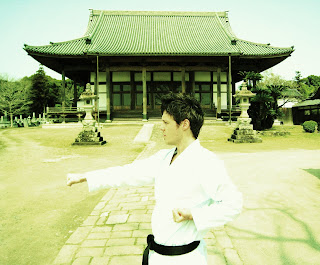 Yesterday marked the beginning of this years 'Golden Week' for us (you can see I have a 'holiday smile'!). Golden Week, also known as Ogata renkyū and Ogon shūkan,) is a major annual public holiday in Japan. The week contains ‘Showa Day’ on April 29th, ‘Constitution Memorial Day’ on May 3rd, ‘Greenery Day’ on May 4th, and ‘Children’s Day’ (also customarily known as ‘Boy's Day’) on May 5th.
Yesterday marked the beginning of this years 'Golden Week' for us (you can see I have a 'holiday smile'!). Golden Week, also known as Ogata renkyū and Ogon shūkan,) is a major annual public holiday in Japan. The week contains ‘Showa Day’ on April 29th, ‘Constitution Memorial Day’ on May 3rd, ‘Greenery Day’ on May 4th, and ‘Children’s Day’ (also customarily known as ‘Boy's Day’) on May 5th.It is the longest public holiday of the year for many Japanese companies, alongside Obon in August and Oshogatsu in January. Golden Week is an extremely popular time for Japanese people to travel. Flights, trains, and hotels are often fully booked despite the significantly higher rates at this time.
___________

I started my Golden Week with a mountain run and karate training at a beautiful shrine. The sunny weather was perfect for outdoor practice. I shared the mountain with several paragliders, and after my self-training spent some relaxing time with Mizuho watching them leap from their departure point. As I watched them fly off the cliff edge, I thought to myself "this is the smoothness us karateka must aim to achieve in our techniques". This 'style' of movement is truly seen in the kata Hushu or Kaze no te (Wind Hands), Suishu or Mizu no te (Water Hands), Nijushiho (24 Steps) and others.
__________
I've planned to do some extra practices in the coming week still intensively focusing on Unsu (see my previous post), Gojushihodai and Enpi. I'm also reviewing the Junro series.
My kihon training is presently focused on making kime with keriwaza; and further study of muchiken (in relation to karada no buki or 'weapons of the body'). Essentially all of my training is still circulating around the techniques and principles I'm working on in Unsu kata.
I really look forward to revealing my technical advancements in the coming month and also some of my current training methods. My target remains twofold; firstly to develop the best karate I can. And secondly to preserve the karate of my late teacher, Asai Tetsuhiho Sensei. I'll constantly aim to achieve these targets by pushing myself to my physical and spiritual limits. Where ever you are in the world, lets train with this spirit together.
Happy holidays to everyone. OSU!
___________
© André Bertel, Japan 2008

 For nearly two decades Unsu was my tokui (favourite) kata. I used Unsu to pass the JKA (Japan Karate Association) examinations for nidan, sandan and yondan.When Asai Sensei invited me to test for godan in Switzerland, he demanded that I select "anything but Unsu".
For nearly two decades Unsu was my tokui (favourite) kata. I used Unsu to pass the JKA (Japan Karate Association) examinations for nidan, sandan and yondan.When Asai Sensei invited me to test for godan in Switzerland, he demanded that I select "anything but Unsu".





